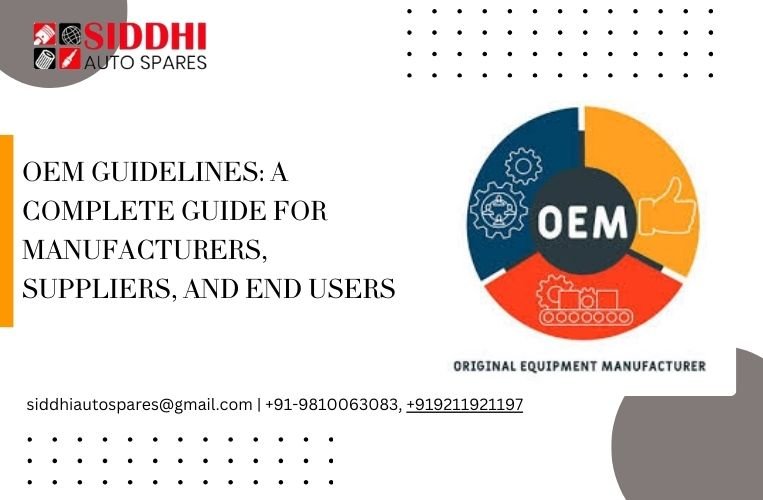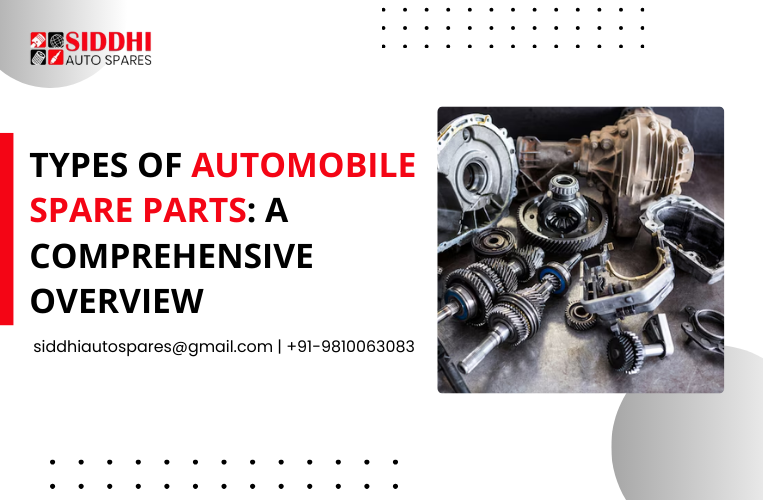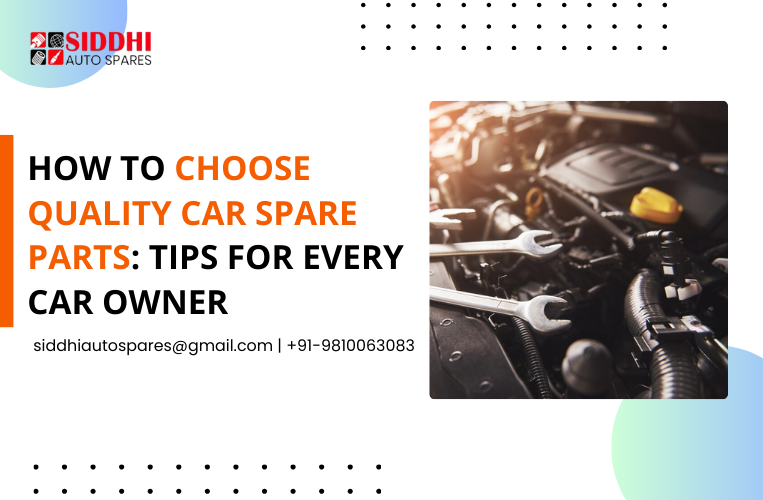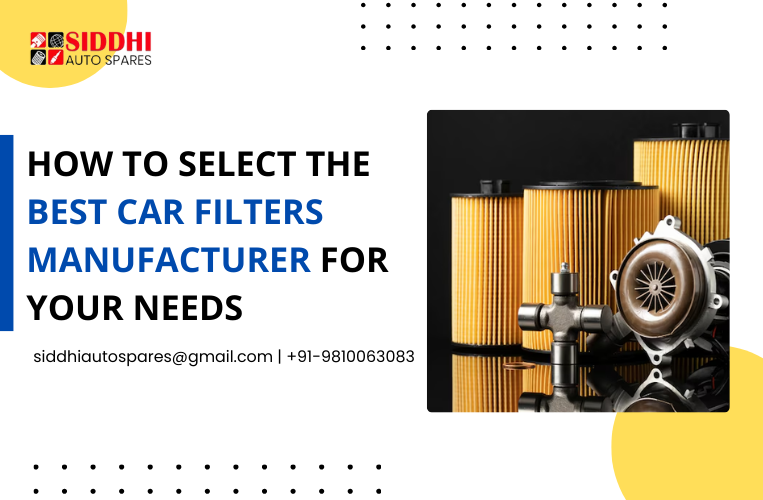OEM, or Original Equipment Manufacturer, is more than simply a name in the sphere of replacement components. It stands for correctness, safety, reliability, and trust. Every car or piece of equipment has a lot of small parts, and if even one of them breaks, the whole thing could stop working. OEM standards have evolved for this reason: they offer an unseen foundation linking manufacturers, suppliers, and consumers in a chain of quality assurance.
For manufacturers, OEM guidelines provide a tight structure for creating and producing components that satisfy worldwide standards. For suppliers, they offer a defined set of guidelines on how to manage, store, and distribute spares without sacrificing integrity. And for end users—fleet operators, retailers, or individual vehicle owners—OEM guidelines ensure that the parts they purchase truly safeguard their investments.
This detailed article looks at OEM guidelines in great depth, underlining their importance, how they differ from other options, and the part every stakeholder has to play in maintaining them.
What Does OEM Mean in Spare Parts?
OEM, which stands for Original Equipment Manufacturer, is the business that first designed and produced a given component for a vehicle or appliance. An OEM spare part purchase resembles getting a component with the same material, size, and performance criteria as the original.
OEM parts are meant to not only fit the vehicle but also to keep its overall state up. They keep warranties safe, maintain safety standards, and cut long-term maintenance costs.
Why OEM Guidelines Are Necessary
These guidelines are not just some internal manuals. They are in fact a series of industry-wide standards keeping intact the interests of businesses on one hand and customers on the other.
Safety First: When manufacturers adhere to OEM guidelines, the risks of faulty brakes, defective engines, or early wear are averted.
Uniformity: OEM guidelines ensure that all parts must behave like the originals, so that performance is uniform across all vehicles and machines.
Cost Containment: The higher initial costs of OEM parts are offset by lower operating costs arising from less frequent breakdowns.
Trust: Any business abiding by OEM guidelines earns customer loyalty in the long term, and in a market where every advantage counts, such goodwill is priceless.
In industries where a single breakdown can delay entire supply chains, OEM compliance is not optional—it is vital.
OEM Guidelines for Manufacturers
The manufacturers set the stage for OEM quality. Their following of the guidelines directly affects the reliability of the end product.
Core OEM principles for manufacturers may include:
Design Accuracy: All dimensions, angles, and surfaces must match original specifications.
High-Quality Materials: Only approved grades of metals, composites, or plastics are considered.
Testing Under Pressure: Stress, heat, vibration, and endurance tests are carried out on the parts before approval.
Traceability: This is via the number of batches, barcode, or any other digital system.
Regulatory Compliance: Global certificates such as ISO/TS 16949, BIS standards in India, and other such regional quality frameworks.
R&D Investments: Continuous research is carried out for better durability and sustainability in OEM spares.
By inculcating good OEM practices, manufacturers secure their reputation in addition to curbing counterfeiting in the market.
OEM Guidelines for Suppliers
Suppliers act as the intermediate link between production and consumption. Their responsibilities include not only selling different kinds of products but also educating, protecting, and delivering.
Supplier responsibilities under OEM guidelines:
Authenticity Checks: Stock only those OEM parts that bear holograms, QR codes, manufacturer seals, or others.
Proper Storage: Bearings, seals, and electronic components must be stored under controlled conditions to prevent damage.
Documentation: Warranty slips, certificates of origins, and instructions must accompany each spare.
Educate Customers: Highlighting the dangers of counterfeit or cheap imitation goods.
Safe Handling: Maintaining package integrity during transport to prevent damage to the products.
Ethical Pricing: Striking a balance between ethical pricing and quality maintenance.
Suppliers adhering to OEM standards become trusted partners in both the manufacturer's chain and the buyer's chain and thus ensure smoother supply chains.
OEM Guidelines for End Users
For the end users, the OEM guidelines translate to practical choices about maintenance and safety. If you have fleets of trucks, manage a workshop, or just drive one vehicle, your safety is in genuine OEM spares.
End User Practices Under Series of OEM Guidelines:
Verify Authenticity: Always check holograms, QR codes, or serial numbers.
Ask for Warranties: Typically, genuine parts carry manufacturer-backed warranties.
Follow Replacement Cycles: OEM Manuals state definite replacement periods for their parts.
Purchase From Trusted Dealers Only: It is wise to buy genuine parts from only reputable suppliers or official distributors.
Weigh Cost Wisely: Rejecting counterfeits now saves you more money later on in repairs.
An OEM Guidelines service discipline makes the machine live longer, break down less, and have fewer chances of accidents.
OEM vs. Aftermarket Parts
Spare parts are often divided into categories of OEM and aftermarket parts.
OEM Parts: Designed by an original manufacturer, they promise fitting and lasting, coming with warranties, the highest cost, and value.
Aftermarket Parts: Third-party manufacturers produce these parts at a lesser price, with varying qualities, mostly no warranties, and maybe not even quite according to specs.
While aftermarket spares may meet a need in the short term, their level of reliability usually cannot match that of OEM components. The difference can be life-changing with crucial components such as braking systems or engine bearings.
Key Challenges in Following OEM Guidelines
While the advantages are very clear and convincing, several hurdles are preventing OEM adherence in markets.
Fake Products: Fake spares look like the original in packaging or visual similarities but fail under stress.
Price Pressure: Customers sometimes demand a cheaper alternative, which might prompt suppliers from doing right.
Awareness Gap: End-users are hardly ever apprised of the long-term dangers associated with the use of non-OEM spares.
Global Supply Chain Disruptions: The arrival of chaos proceedings to disruption may affect OEM production timelines.
Solving these challenges requires cooperation across the supply chain, stricter laws, and better customer education.
The Role of Technology in Strengthening OEM Guidelines
Modern technology has simply streamlined the implementation and monitoring of OEM compliance.
QR Codes and Holograms: Enable purchasers to check instantly for authenticity.
Blockchain Systems: Maintain transparent traceability from manufacturer to buyer.
Artificial Intelligence: Detects defects that are invisible to the human eye during inspection.
Smart Warehousing: Prevents environmental damage to the parts by climate-controlled storage.
Digital Catalogues: Enable suppliers and end users to match parts accurately.
Such technology strengthens confidence in OEM practices and protects firms against fraud.
Industry-Wide OEM Guidelines
Although the highlight of this study is automotive and heavy machinery, OEM guidelines do exist in other industries too.
Electronics: OEM standards ensure the safety of devices such as smartphones and laptops.
Aviation: Airplane components follow OEM regulations for reasons critical with respect to safety.
Medical Equipment: Genuine OEM parts are what life-saving machines trust for safety.
This shows how OEM practices are otherwise universally important, depending on the sector.
Sustainability and OEM Guidelines
Nowadays, OEM standards go hand-in-hand with environmental responsibility.
Eco-Friendly Materials: Use of recyclable or renewable materials.
Energy-Efficient Production: Using production methods that reduce emission.
Longer Life of the Parts: Fewer replacements lead to less emphasis on waste from materials.
Manufacturers supporting sustainability are gaining credibility in global markets where green standards are fast becoming compulsory.
Case Study: Cost Savings through OEM Compliance
Consider a logistics company managing 100 trucks. Tempted by low prices, they switched to non-OEM brake pads. Within six months, the increased wear resulted in numerous breakdowns, higher fuel consumption, and even safety hazards. With the return of OEM-approved pads, maintenance downtime reduced, operations became safer, and overall, a positive impact on yearly costs ensued.
This situation comes to prove that OEM compliance is not about paying more; rather, it is about paying smart.
How Siddhi Auto Spares Upholds OEM Guidelines
At Siddhi Auto Spares, our philosophy is rooted in OEM compliance. As a trusted spare parts supplier in India and abroad, we ensure that every product meets OEM benchmarks for safety, performance, and durability.
We specialize in certified spares for Tata, Eicher, Ashok Leyland, AMW Mahindra, and AIS, catering to both wholesale and retail buyers. Our customers benefit from:
Verified OEM spare parts with full authenticity assurance.
Competitive pricing backed by quality guarantees.
Expert support in selecting the right components.
Properly stored and carefully delivered products.
Fast distribution networks across regions.
This commitment to OEM guidelines strengthens both machine performance and customer trust.
Conclusion
OEM standards constitute the backbone of the spare parts ecosystem. They assure that every part-from the smallest bearing to the largest assembly-fulfills its promise of safety and performance. The manufacturer needs to maintain quality through severe scrutiny and standards of design. Suppliers need to uphold their truthfulness and train the customers. The end-user must be wise and avoid counterfeit or low-grade ones.
In an industry where a single mishap can freeze production lines and create deadly accidents, OEM compliance involves more than just technical precision. It is about reliability, trust, and long-term value. By working along these guidelines, both businesses and customers contribute to safer roads, stronger machines, and better outcomes.
Siddhi Auto Spares stands committed to OEM standards in every product it delivers, ensuring that its customers receive the genuine quality they can trust.






